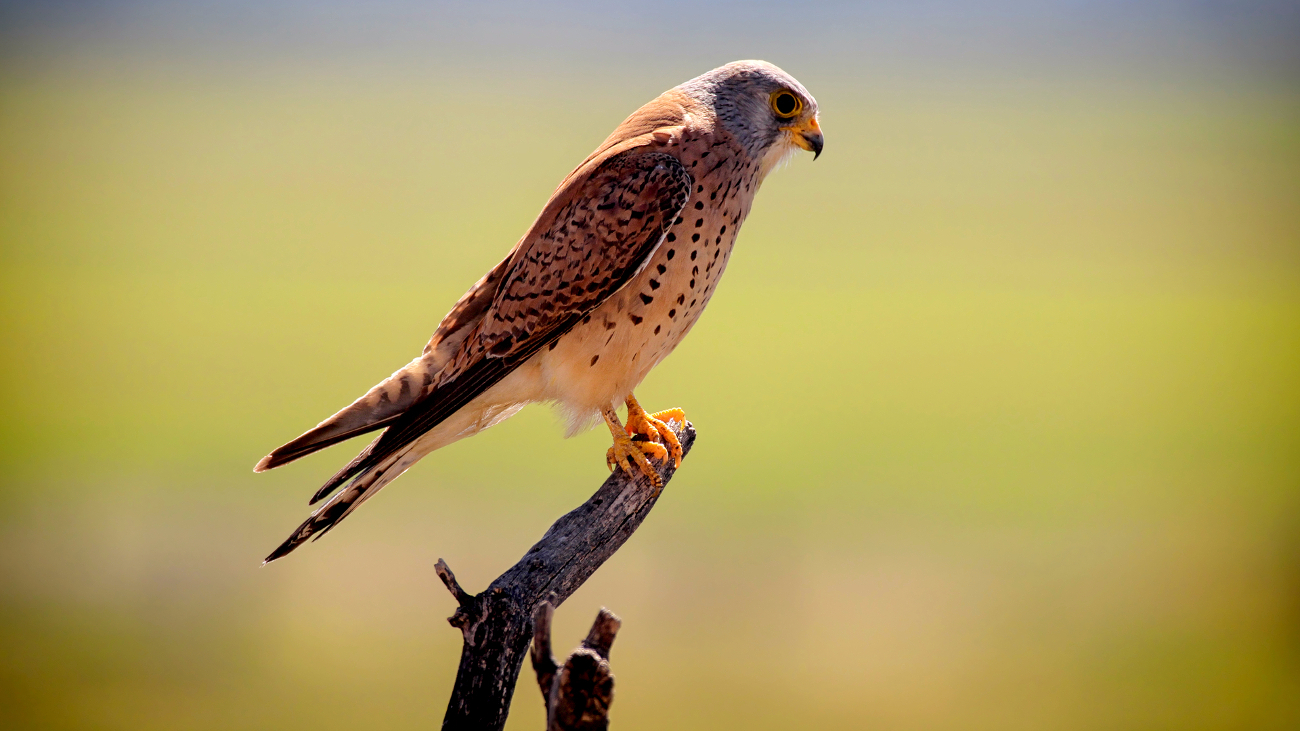- Home
- Conservancy
- Lesser kestrel
Description
It is a small bird of prey, 27–33 cm (11–13 in) in length with a 63–72 cm (25–28 in) wingspan. It looks very much like the larger common kestrel but has proportionally shorter wings and tail. It shares a brown back and barred grey underparts with the larger species. The male has a grey head and tail like male common kestrels, but lacks the dark spotting on the back, the black malar stripe, and has grey patches in the wings.
The female and young birds are slightly paler than their relative, but are so similar that call and structure are better guides than plumage. The call is a diagnostic harsh chay-chay-chay, unlike the common kestrel's kee-kee-kee. Neither sex has dark talons as is usual in falcons; those of this species are a peculiar whitish-horn color. This, however, is only conspicuous when birds are seen at very close range, e.g. in captivity.
Despite its outward similarity, this species appears not to be closely related to the common kestrel. In fact, mtDNA cytochrome b sequence analysis places it at a basal position with regards to the other "true" kestrels (i.e., excluding the American kestrel and probably the grey African kestrels too). Its divergence is tentatively placed to around the Miocene-Pliocene boundary (Messinian to Zanclean, or about 7–3.5 mya). The morphological similarity with the common kestrel is most puzzling, but still it appears to betray the present species' actual relationships: the lack of a malar stripe seems ancestral for kestrels, and the grey wing colour unites the lesser kestrel with most other Falco species, but not the other true kestrels.
Fun Facts
The lesser kestrel eats insects, but also small birds, reptiles and rodents (especially mice), which are often taken on the ground. It nests colonially on buildings, cliffs, or in tree holes, laying up to 3–6 eggs. No nest structure is built, which is typical for falcons. On their wintering grounds in West Africa, lesser kestrels favor a "latitude belt"[6] through Senegal where locusts and grasshoppers are plentiful. Surveys of lesser kestrels wintering in January 2007 by the Ligue pour la Protection des Oiseaux revealed them roosting communally. A roost in Senegal discovered during one of the surveys held 28,600 birds, together with 16,000 scissor-tailed kites Chelictinia riocourii.
It is widespread and plentiful on a global scale, and the IUCN have classed it as Least Concern. Apart from possible habitat destruction, it appears that indiscriminate use of pesticides has a strong effect on this species due to its insectivorous habits.
